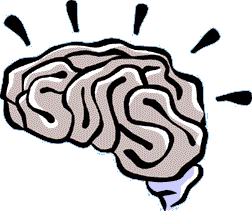Dental Health May be More About Nurture Than Nature
May 8th, 2019
New Study on Dental Health
Australian researchers recruited 250 twin pairs when their mothers were still pregnant. They collected health and demographic data on them at 24 weeks gestation and at age 18 months. When they were six years old, the 172 twin pairs that were still in the study underwent dental examinations.
To see how much genetics might shape the risk of cavities, researchers looked at how often both kids got cavities in pairs of identical twins—who have identical genetic variations—and fraternal twins—who typically share half of their variations.
In the study, both twins had cavities in 29 pairs; in another 33 pairs of twins, just one child was affected. The risk of developing tooth decay or cavities were similar for identical and fraternal pairs, suggesting that genetics do not play an important role in tooth decay.
Three environmental factors in particular appeared to impact the risk of cavities: maternal obesity, defects in tooth enamel mineralization and lack of community water fluoridation.
Keep Your Family’s Teeth Healthy
There are some simple ways to keep teeth strong and healthy:
- Start children early: Dental care should begin as soon as a child’s first tooth appears.
- Use enough, but not too much fluoride: Fluoride should be used sparingly in young children, no more than a pea-sized dab on the toothbrush.
- Brush twice a day and floss daily: Gum disease and tooth decay remain big problems.
- Rinse or chew gum after meals: In addition to brushing and flossing, rinsing your mouth with an antibacterial rinse can help prevent decay and can also protect by increasing saliva flow, which naturally washes away bacteria and neutralizes acid.
- Don’t smoke: Tobacco stains teeth and significantly increases the risk of gum diseases and oral cancer.
- Eat smart: At every age, a healthy diet is essential to healthy teeth and gums.
- Avoid sugary foods: When bacteria in the mouth break down simple sugars, they produce acids that can erode tooth enamel, opening the door to decay.
- Make an appointment: Most experts recommend a dental checkup every six months.
Worldwide, an estimated 60 to 90 percent of school age children have tooth decay.
What IAA has to Say
As much as you want to blame genetics for poor dental health that may no longer be the case. Insurance Administrator of America hopes that your smile is nice and healthy! Remember, with IAA one call does it all.
Interested in reading more on this topic? Click here!
Researchers Might Have Found a Cure for “Bubble Boy Disease”
May 1st, 2019 Researchers believe they may have found a cure for x-linked severe combined immunodeficiency (SCID-X1), more commonly known as “Bubble Boy Disease.”
Researchers believe they may have found a cure for x-linked severe combined immunodeficiency (SCID-X1), more commonly known as “Bubble Boy Disease.”
A Cure for SCID-X1
Researchers developed an experimental gene therapy that involves harvesting bone marrow stem cells from a child with SCID-X1, inserting the normal gene that is missing in these patients into those cells, and then infusing them back into the child so the cells repopulate and restore the immune system.
The scientists used an engineered copy of the human immunodeficiency virus (HIV). The virus was engineered so that its active parts were removed, making it safe to use.
The virus that was inserted included “insulations” to block activations of certain genes. They hoped this would stop the treatment from inadvertently causing leukemia by stumbling across a cancer causing gene and activating it.
The newly developed gene therapy was performed in combination with chemotherapy.
The treatment restored healthy functioning in diverse groups of immune cells, including T-cells, B-cells and NK-cells.
All patients were treated between the ages of two months and 14 months, and all lacked a genetically matched sibling donor.
The process takes approximately 10 days. Ten infants have successfully received the experimental therapy. All the patients survived the treatment and were doing well, by an average of 16.4 months after treatment, according to the study. More research is needed, however, to determine whether the effects will continue as the patients grow older.
A bone marrow transplant is typically used to treat SCID early in life, before an infection can happen. Transplants in the first three months of life have the highest success rate. Although transplants are life-saving, they often only partially restore a patient’s immunity.
The study was published in the “New England Journal of Medicine” on April 17.
What is SCID-X1?
SCID refers to a group of rare disorders caused by mutations in genes that influence the development and function of important immune cells.
Infants born with SCID may appear healthy, but are highly susceptible to severe infections—so much so that a common cold could kill them.
There are several types of SCID, based on which gene defect is involved; mutations in the IL2RG gene on the x-chromosome cause x-linked SCID or SCID-X1, which primarily affects infant boys.
The condition probably affects one in 50,000 to 100,000 newborns according to the U.S. Library of Medicine.
If left untreated, a child with SCID-X1 rarely would live beyond their second birthday.
Insurance Administrator of America
New discoveries are being made every day and Insurance Administrator of America thinks you should stay up to date! Remember, with IAA one call does it all.
Like this blog post? Let IAA know by going to our Facebook page and clicking the Like button!
Could an Experimental Brain Scan be the Future Diagnostic Tool for CTE?
April 24th, 2019
Potential New Scan to Diagnose CTE
A study used PET scans in a small group of former NFL players with consistent cognitive, mood and behavioral symptoms such as depression, rage and memory loss. The study found that tau-the abnormal protein that forms after the destruction of normal brain matter—was at significantly higher levels on the PET scans of the 26 players, compared to those who had not participated in contact sports or experienced symptoms. The tau-deposits were also seen in the same specific areas and in the same general pattern of previously studied brains diagnosed with CTE by an autopsy.
In one scan, subjects received a flortaucipir marker, a substance that when injected, bonds to tau proteins to make them visible under PET cameras. In another scan, they received an amyloid marker, which makes visible plaque buildup associated with Alzheimer’s disease. By using both markers, researchers were able to suggest the patients’ symptoms likely were not due to Alzheimer’s.
Scientists found no relationship between the amount of tau seen on the PET scans and the severity of behavior and mood symptoms or performance on cognitive tests.
Though the research is not a diagnostic tool, it represents advancement in the road toward individual assessments.
The results of the study were published on April 10 in the “New England Journal of Medicine.”
Currently, there is no way to predict if or when someone will develop CTE and a diagnosis can only be made after death.
Signs and Symptoms of CTE
CTE is thought to cause areas of the brain to waste away. Some of the signs and symptoms of CTE may include:
- Depression or apathy
- Difficulty planning and carrying out tasks
- Difficulty thinking (cognitive impairment)
- Emotional instability
- Impulsive behavior
- Short term memory loss
- Substance abuse
- Suicidal thoughts or behavior
Other suspected symptoms include:
- Aggression
- Dementia
- Irritability
- Motor impairment such as difficulty walking, tremor, loss of muscle movement, weakness, or rigidity
- Speech and language difficulties
- Trouble swallowing
- Trouble with sense of smell
- Vision and focusing problems
CTE has been seen in people as young as 17, but symptoms do not generally begin until years after the onset of head impact. Early symptoms of CTE usually appear in a patient’s late 20s or 30s.
What IAA has to Say
New discoveries are being made every day and Insurance Administrator of America thinks you should stay up to date! Remember, with IAA one call does it all.
Like this blog post? Let IAA know by going to our Facebook page and clicking the Like button!
New Study Finds Moderate Drinking can still be Harmful to Health
April 17th, 2019
New Study
Published on April 4 in “The Lancet,” the massive genetic study of 160,000 adults adds to growing research that alcohol can have lasting health implications.
Researchers conducted the study by looking at a group of Chinese adults because of common genetic intolerance to alcohol in that population. Those intolerances are not linked to other lifestyle factors, like smoking, so they can explain how drinking causes these health effects—rather than just being associated with them, the authors said.
Four drinks a day increased stroke risk by 35 percent and no positive effects were found in regards to light to moderate drinking, according to the research.
The research adds to a previous study from 2018 also published in “The Lancet,” which looked at data on 28 million people worldwide and determined that the harms of drinking far outweigh any potential health benefits.
Previous studies had suggested that moderate drinkers had a lower risk of stroke and heart attack compared to non-drinkers. However, it was unknown if that was because the moderate drinking itself had decreased the risk or if it was because non-drinkers had other health problems.
Alcohol and Your Health
Drinking too much can harm your health. Excessive alcohol use led to approximately 88,000 deaths each year in the United States from 2006-2010, according to the Centers for Disease Control and Prevention.
Binge drinking, the most common form of excessive drinking, is defined as consuming:
- For women, eight or more drinks per week
- For men, 15 or more drinks per week
Over time, excessive alcohol use can lead to the development of chronic diseases and other serious problems including:
- Alcohol dependence or alcoholism
- Cancer of the breast, mouth, throat, esophagus, liver, and colon
- High blood pressure, heart disease, stroke, liver disease, and digestive problems
- Learning and memory problems including dementia and poor school performance
- Mental health problems including depression and anxiety
- Social problems including lost productivity, family problems and unemployment
Researchers have linked alcohol consumption to more than 60 diseases.
What IAA has to Say
Insurance Administrator of America wants you to know what’s going on in the world of health. Remember, with IAA one call does it all.
Like this blog post? Let IAA know by going to our Facebook page and clicking the Like button!
Hands Only CPR Helps Save Lives
April 10th, 2019 A Swedish review of out-of-hospital cardiac arrest data shows that rates of bystander CPR nearly doubled; compression only CPR increased six-fold over a 18 year period; and the chance of survival was doubled for any form of CPR compared with no CPR, according to new research in the American Heart Association’s journal “Circulation.”
A Swedish review of out-of-hospital cardiac arrest data shows that rates of bystander CPR nearly doubled; compression only CPR increased six-fold over a 18 year period; and the chance of survival was doubled for any form of CPR compared with no CPR, according to new research in the American Heart Association’s journal “Circulation.”
Compression Only CPR
Due to the emergence of compression only CPR as an alternative to standard CPR (chest compressions and mouth-to-mouth rescue breaths) researchers analyzed the impact of the simpler, hands only CPR technique and the association between the type of CPR performed and the patient survival for 30 days.
Findings come from research conducted between 2000 and 2017. The study included more than 30,000 participants and showed that nearly 40 percent received CPR from a bystander that included mouth- to-mouth and 20 percent received hand compressions.
The American Heart Association says immediate CPR can double or triple chances of survival after cardiac arrest. Keeping the blood flow active, even partially, extends the opportunity for successful resuscitation once trained medical staff arrive on site.
Cardiac Arrest
Cardiac arrest is the abrupt loss of heart function. It can come on suddenly and often is fatal if appropriate steps aren’t taken immediately. Before giving a person CPR:
- Check the scene around the person: Check to make sure the scene is safe, tap the person on the shoulder to see if they’re ok, and look for signs of rhythmic, normal breathing.
- Call 911 for assistance: If there’s no response from the victim when asked if he or she is ok, call 911 or ask a bystander for help.
- Begin compressions if the person is unresponsive: Perform hands only CPR.
According to the American Red Cross the steps to performing hands only CPR are:
- Kneel besides the person who needs help.
- Place the heel of one hand on the center of the chest.
- Place the heel of the other hand on top of the first hand, and then lace your fingers together.
- Position your body so that your shoulders are directly over your hands, and keep your arms straight.
- Use your body weight to help you administer compressions that are at least two inches deep and delivered at a rate of at least 100 compressions per minute. Just be sure to let the chest rise completely between compressions.
- Continue hands only CPR until: you see obvious signs of life, like breathing, another trained responder or emergency medical professional can take over, or you’re too exhausted to continue, an AED becomes available, or the scene becomes unsafe.
What IAA has to Say
Insurance Administrator of America hopes everyone can take the time to learn how to administer CPR from a certified professional. IAA wants you to remember that you never know when it will help save a life!
Like this blog post? Let IAA know by going to our Facebook page and clicking the Like button!
